The Ultimate African Safari Travel Guide
I know it sounds cliche, but there is just nothing like being in the African bush. Nowadays, planning that perfect African safari can be difficult though. There are so many countries to choose from, parks to explore, animals to see, safari lodges, budgets to consider, and a variety of unique activities to partake in that it makes picking one place impossible almost.
We spent the past year self-driving and going on safari in Africa and there is simply nothing in this world like it. It’s hard to not walk away smiling after seeing a herd of elephants or a pack of wild dogs in the wild. By using our travel guide you’ll get the general gist of planning your own safari in Africa. Hopefully, this will make your planning that much easier so you can take more time to enjoy your special trip.
Quick Tips

- Language: Most if not all safari guides and camp managers will be able to communicate with you in English.
- Health: We recommend you have current tetanus, typhoid, and hepatitis A & B vaccinations. Check if you’re going to a malaria zone (season matters). The drier the weather the less likely there will be mosquitos, as they need water to breed.
- Currency: US Dollar is the most common currency. Plan to bring enough with you before you arrive in Africa. New bills are best as some African banks will not accept bills past 2006.
- Visa: Americans, as well as many other nationalities, are able to enter South Africa, Namibia, and Botswana visa-free. Zimbabwe, Zambia, Malawi, Tanzania, and Kenya all require visas. Most can be obtained at the border and paid via USD.
- Weather: There are two main seasons in Africa – dry and rainy. During the dry seasons, temperatures vary widely and vegetation is sparse. It is considered a good season for safari as animals are easy to spot with low vegetation and they congregate around water sources. The rainy season is considered offseason as it’s harder to spot game, but the weather is cooler and the landscape is beautiful. There is another advantage of the offseason as the prices are lower and tourists fewer.
- What to Pack: What you should pack for safari varies greatly on the time of year. This safari packing list is a great starting point for any safari. A safari hat is always recommended in the hot African heat and if you plan on going on bush walks you will want a pair of sturdy boots.
- Stay Connected: Many national parks and game reserves are in the middle of nowhere. So, your chances of catching a signal are slim. However many safari lodges will at least have basic WiFi to check emails and social media. Check out our experience with the internet in Africa.
- Tipping: Tipping your guides and service staff on safari is common practice. A good base rate for tipping is $5-10 per day per person for your guide, $5-10 per person per day if you have a tracker and $5-10 per person per day for waitstaff and housekeeping at lodges. Tips should be given to staff, tip boxes, or camp managers at the end of your stay in USD or the local currency.
- Adaptor: You’ll need this adaptor in Southern Africa, and this one in Eastern Africa.
- Travel Insurance: We ALWAYS travel with travel insurance. World Nomads & Safety Wing offer flexible and great plans!
Featured Posts On African Safaris
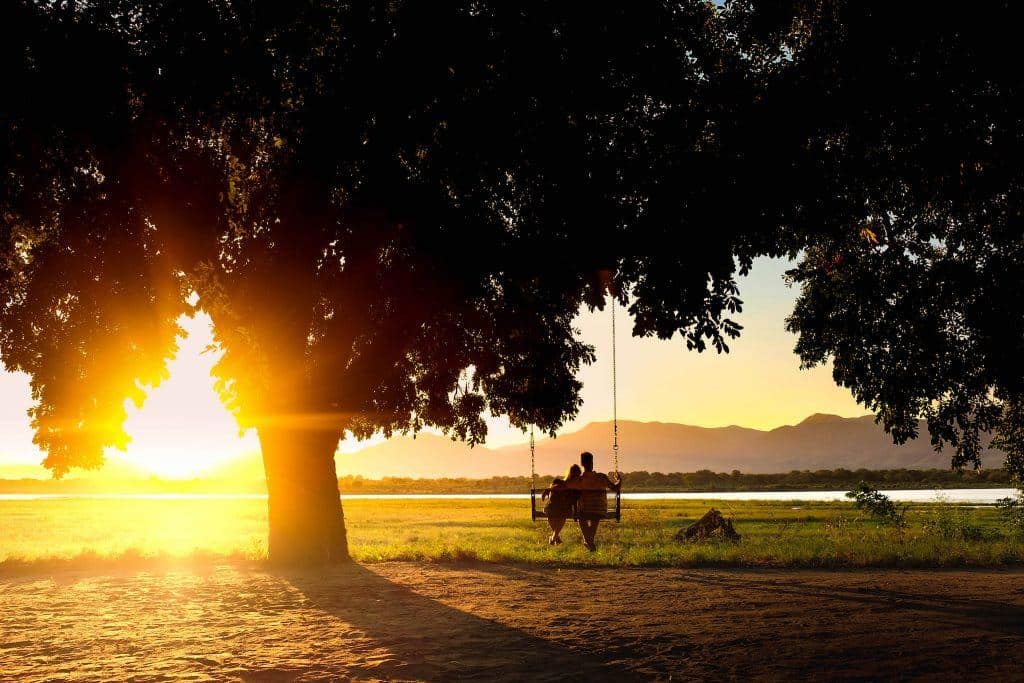
Zimbabwe’s Mana Pools
Mana Pools National Park often felt like more of a myth than reality to us. We heard the park referenced many times and knew that it was a fact that those fortunate enough to make it to the park were rewarded with an amazing safari.

Tanzania’s Ruaha National Park
Located in the heart of Tanzania, Ruaha is the ‘other park’ on the Southern circuit. Ruaha’s relative inaccessibility means it gets far fewer tourists than the Selous and less than any comparable park in the Northern circuit.

Wolwedans in Namibia
If there is one lodge that is THE lodge in Namibia it is Wolwedans. There is arguably no better way to experience the Namibian desert. The Wolwedans operation is a contender for the best eco-lodge operation in Africa and arguably the best in Namibia.

A Safari in Linyanti With African Bush Camps
As our bush flight prepared to land in the Linyanti Concession we could see huge herds of elephants deep in the Linyanti swamps. The sight was dizzying as it seemed to be an innumerable amount of elephants.
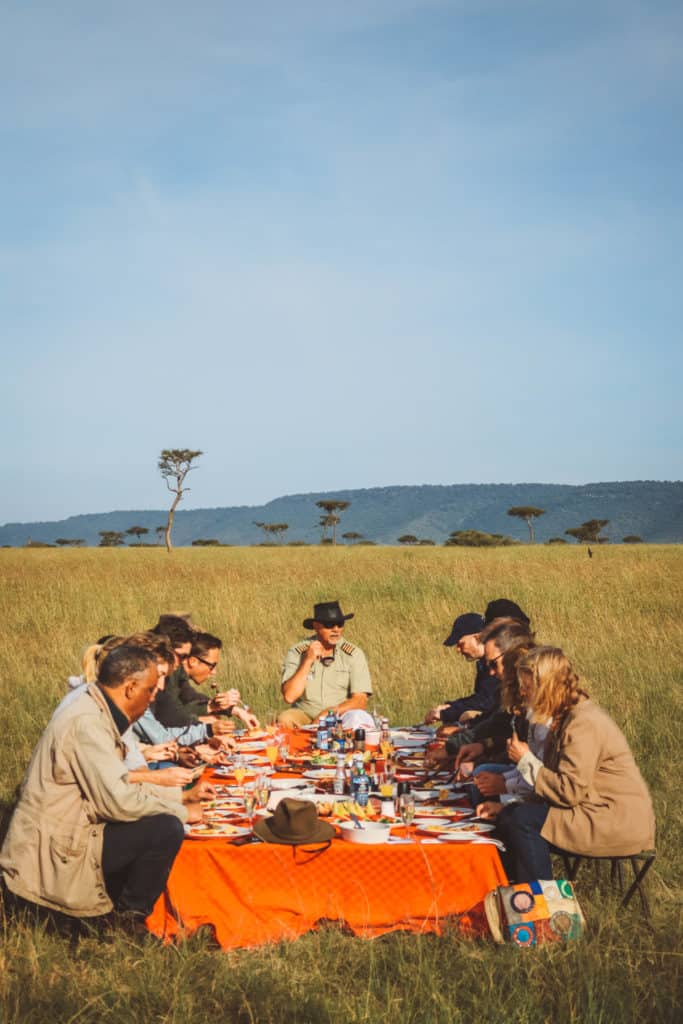
Safari Clothes Guide • What To Wear on Safari
Safari clothes are a serious affair in Africa. Yes, it is a bit “old-fashioned,” but fashions like the proper safari outfit never die. Unlike, certain parts of the world you won’t be laughed at if you show up in all khaki on a game reserve.
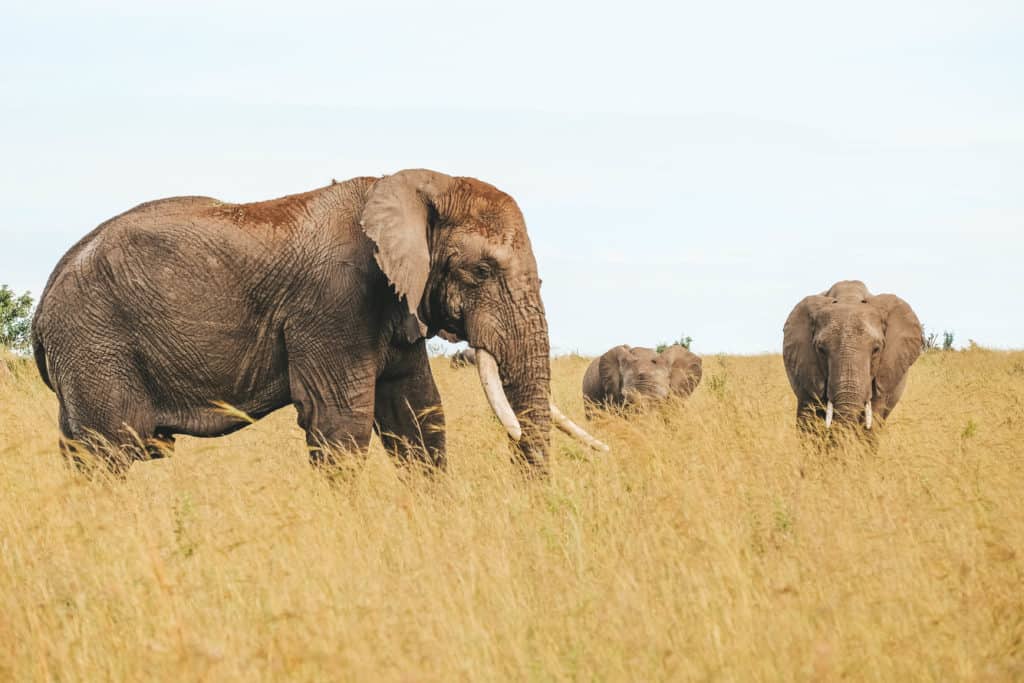
Guide To Safari Animals
Safari in this day and age is about preserving the land and its inhabitants, that is African safari animals. The romance of a wildlife safari is unmistakable.

Horseback Safari at ant’s Hill
We’ve been fortunate enough to have some incredible safari experiences over the years, but riding through the bush on horseback was a first.

Safari Tips For Your first Time
Getting ready to go on your first African safari? In this post, we share our best African safari tips. We’ll never forget our first safari in Africa.
An Introduction to Safaris in Africa
Safaris in Africa
What kind of safari you’ll have depends on your budget. You can easily spend anywhere from $2000 to $15,000 on a one-week safari. Namibia and South Africa are the cheapest countries to go on a safari in, while Botswana and Tanzania are the highest. Granted it all depends on the lodge and parks, as Tanzania does have budget operators.
Budget Safari Operators
Acacia Africa, Nomad, Oasis, and Absolute Africa run budget safari and overland tours in Africa. Prices vary depending on where you are going on safari.
Generally, East Africa will cost more than Southern Africa and can range anywhere between $60-$150 per person a day. Many times you will have to pay extra for your park fees on the tour. Budget safaris usually involve camping, bucket showers, and cooking your own basic meals. They are great for meeting people!
Midrange safari operators
Serena, Simba Portfolio Lodges, African Horizons, Perfect Africa, Overseas Adventure Travel, and Zara Tours all offer safaris in the midrange price point. Midrange safaris are great – we have been on a few.
They typically occur in popular parks where you will have buffet-style dinners, tented accommodation, hot showers, and daily game drives in shared vehicles with knowledgeable guides.
Luxury safari operators
Nomad Tanzania, Wilderness Safaris, Elewana Collection, and Norman Carr Safaris all cater to the luxury market. These are the best of the best in the safari business and their prices reflect that.
Luxury safari operators usually offer tents with pristine beds, top-notch service, cooked to order food, coffee and tea deliveries, and all-inclusive drinks. That’s right for $1,000+ a night you can drink all the G&T’s you want.
My suggestion is to check Safari Bookings as they offer a range of safaris all over Africa with varying price points.

Notable Places to Safari in Africa
South Africa
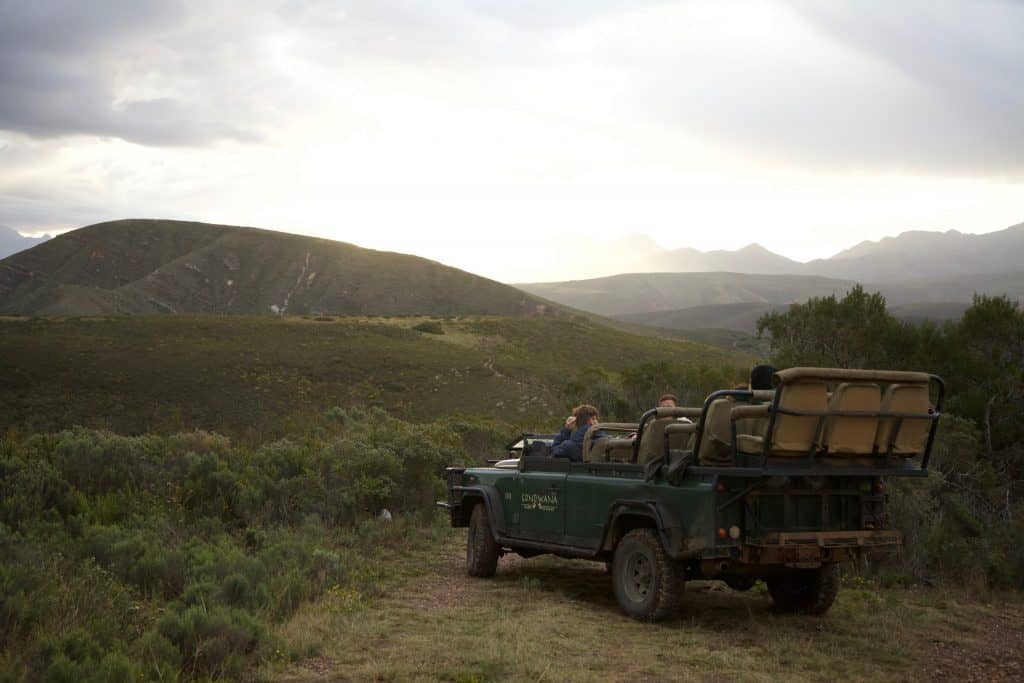
Kruger National Park
“The Kruger,” as South Africans know it, is one of the most world-renowned national parks to spot wildlife. It is the quintessential park to have a wildlife safari in South Africa.
The park is roughly the size of Israel and visitors are almost guaranteed to spot the “Big Five” in one day. It’s one of the more affordable parks in Africa and is one of the most well-maintained with paved roads and great signage. Perfect for first-time self-drivers.
Gondwana Game Reserve
A private game reserve located near Mossel Bay in the Western Cape. You can have an affordable and great big five safari here. It’s in close proximity to Cape Town for those visiting the city. It’s excellent preservation of the Fynbos floral kingdom that can be found in very few places.
Namibia

Etosha National Park
Etosha National Park is without a doubt one of the best value safaris in Africa. At $80 Namibian Dollars a day the park offers some of the best game viewings in Southern Africa at an affordable price. H
owever, Etosha is barren and dry and far from the most beautiful national park. Etosha is very easy for self-drivers to handle and a 4×4 is not necessary (good suspension doesn’t hurt).
The Kalahari
The Tswana refer to the Kalahari as the Kgalagadi: Land of Thirst. The massive stretch of earth stretches across eight countries and sunsets here are mesmerizing and demand the travelers’ attention.
The volume of sand in the Kalahari makes it the largest desert in the world, but that doesn’t mean you’ll find large sand dunes here. Instead, it is endless plain of deep red sand. The desert is also home to numerous large mammals such as oryx, springbok, lions, zebras, and jackals. It may not be what you think of when you think of safari, but it is unique and different.
Botswana
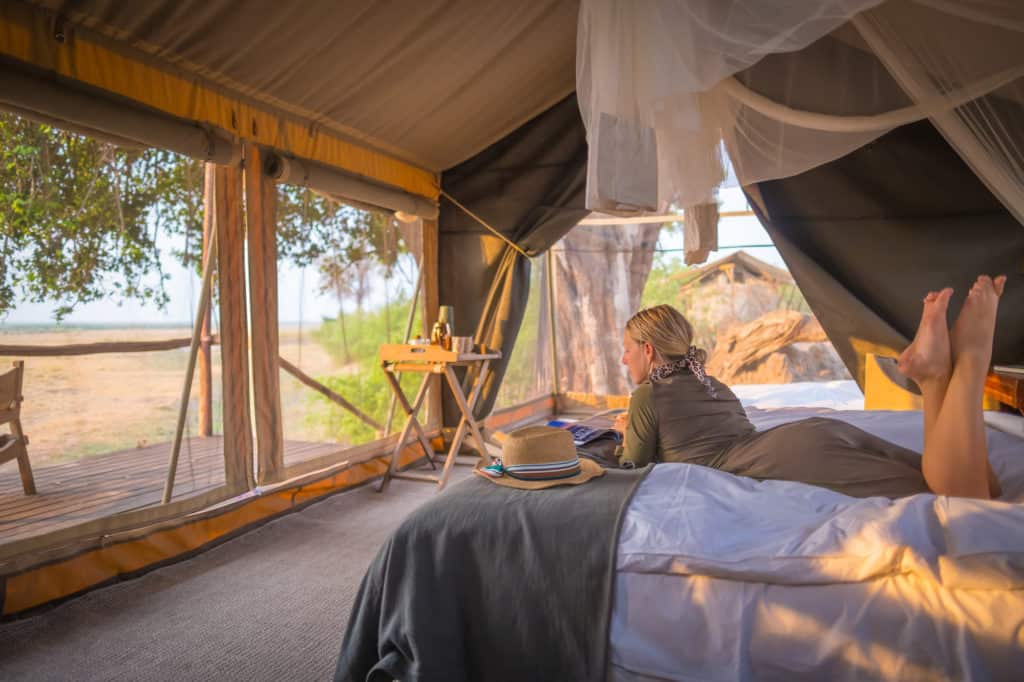
Okavango Delta
Chances are you’ve seen the Okavango Delta on Planet Earth or a Nat Geo documentary. It’s where Okavango River reaches a tectonic trough in the central part of the endorheic basin of the Kalahari to form a swampy inland delta and wildlife haven. It’s one of the best places to safari in all of Africa, but it is also one of the most expensive. Botswana values their country and the wildlife so they operate on a high cost/low tourism model so the place doesn’t end up like Disney World.
The result is some of the nicest and most expensive lodges in Africa. It is elite. However, there are a few budget options and if you want to self-drive with a 4×4 camping it is a possibility. Just be prepared it’s the real wild and the only roads are deep sandy tracks with no support or civilization nearby.
Chobe National Park
The Chobe National Park was Botswana’s first national park. It is the third largest park in the country at roughly 11,700 km2. The area that covers the national park is limited in scope to the area as a whole.
The surroundings of the park are both unfenced and declared non-hunting zones creating a free movement for the animals. You can spot the big five here and you will without a doubt see an elephant as they overpopulate Chobe. We enjoyed doing a riverboat safari here.
Tanzania

The Serengeti
If there is one park in Africa that everyone knows it is the Serengeti. The landscape here is the Africa you’ve always imagined and seen depicted in the Lion King and Out of Africa. It is famous for its annual migration of over 1.5 million white-bearded (or brindled) wildebeest.
Because of its popularity, the Serengeti draws in massive amounts of tourists every year. While you may be out in the wild you will always be near another safari vehicle.
Ngorongoro Crater
The Ngorongoro Crater in Tanzania is the largest unfilled inactive volcanic crater, or caldera, in the world. However, it’s not entirely empty as a wildlife spectacle unfolds in this dramatic setting. At the base of 610m cliff faces elephants trumpet, lions roar, and antelope…eat grass.
The crater is arguably the best place in Tanzania to see the big five in one day. It is also a UNESCO World Heritage Site and one of the most mesmerizing natural features in the world. If your goal is to see as many animals with as little time possible then the Crater is the perfect spot.
The Selous
The Selous Game Reserve is located in southern Tanzania and far from the madding crowds of the Serengeti. The 54,600 square kilometer safari area is Africa’s largest game reserve and one of the most beautiful wildlife areas in the world.
What’s even more surprising is the park is still undiscovered, so to speak! You’ll need a 4×4 to drive in The Selous, but what you’ll find is true wilderness. Sadly, if you’re after elephants don’t go to The Selous as their elephant population has been poached to death. 🙁
Ruaha National Park
Ruaha National Park is the largest park in Tanzania contrary to what many believe is the Serengeti due to its sheer popularity. The park is approximately 20,226 square kilometers in size and is about a two-hour drive West of Iringa. T
he park is named after the great Ruaha River, which is 475 km long, and one of the main reasons the park is wonderful for game viewing.
Kenya

Masai Mara
The fact that Kenya is home to the original safari and the Masai Mara is the epicenter of the industry should come as no surprise. Located in the Southwest of Kenya the 1,510 square km Masai Mara National Reserve is home to an abundance of game including the seasonal wildebeest migration.
The migration is the greatest wildlife spectacle on earth, when over a million wildebeest cross plains, valleys, and rivers in search of fresh pasture. This used to be the most popular place to safari until instability in Kenya and a few terrorist attacks hit and tourists went to the Serengeti instead.
However, this is my number one place for a safari in Africa as it truly looks and feels like “Africa,” and the game here is abundant.
Nairobi National Park
I won’t lie and say it’s the most beautiful park or the best place to go on safari. However, Nairobi National Park is the only major National park located in a city center.
It’s amazing that within one hour you can go from a hip coffee shop to photographing African Buffalo, a feared member of the “Big Five” animals. We came here to get photos of African wildlife with a city landscape in the back, but left seeing at least 10 black rhino!
Uganda

Queen Elizabeth National Park
Queen Elizabeth National Park is 1978km2 in size. 95 mammal species and over 600 different species of birds call the park home! Queen Elizabeth is the perfect stop after going gorilla trekking in Bwindi National Park.
The park is stunning and has many unique craters located inside. The southern region of the park is known as Ishasha. It is a great spot to go in search of some famous tree-climbing lions.
Murchison Falls National Park
It’s hard to believe that the entire Nile River squeezes itself through just a 7-meter wide gap making Murchison Falls. The waterfall is 43 meters high and makes for an impressive sight to see.
Besides the beautiful falls, Murchison National Park the home of 76 species of mammals and 451 birds. It also holds Uganda’s largest population of crocodiles, so I wouldn’t recommend sunbathing along the river banks. A boat trip to the base of the falls runs visitors $30 per person.
Zimbabwe
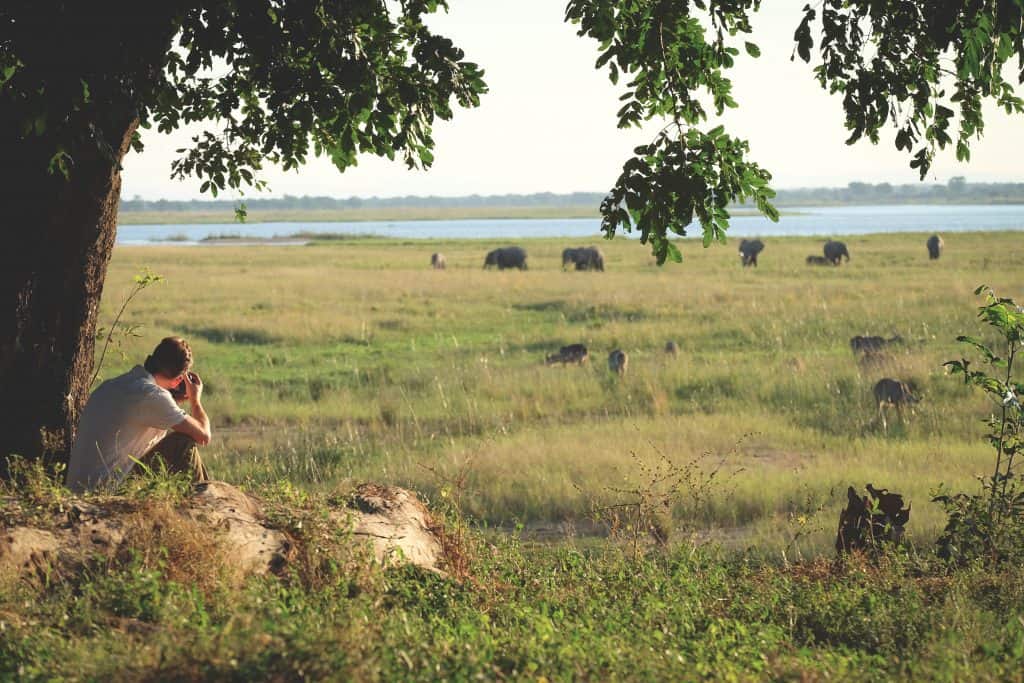
Mana Pools National Park
Mana Pools is widely considered one of Zimbabwe’s finest parks and there is little mystery as to why. The African Park is renowned for its position on the Zambezi River, massive elephants, and a healthy lion population.
It occupies around 2,200 sq km of land and is surrounded by safari concessions that act as a successful buffer between man and the wilderness. There are only a few lodges in the park and you will need a 4×4 to self-drive. Because of this don’t expect to find many tourists in the park.
Hwange National Park
Bordering Botswana, Hwange National Park is Zimbabwe’s largest national park and covers an area of 14,600km². Its massive size leads to varying landscape, game, and wild bush.
The park moves from desert scrubs on the edge of the Kalahari in the south, to granite hills and woodlands filled with mopane and teak in the North. The park is easily accessible and full of the highest numbers of animals. These are best spotted in the dry season (August to October) when the wildlife congregates around the shrunken water holes.
Zambia

Lower Zambezi National Park
Zambia’s Lower Zambezi National Park is an unspoiled wilderness in Africa. Unlike South Africa’s Kruger, Tanzania’s Serengeti, or South Luangwa in Zambia you can have a safari here without ever seeing another tourist. W
ith an ever-present water source and its inaccessibility, the park has become a wildlife haven. Night game drives, river safaris, and canoeing trips are all also very popular here.
Kafue National Park
At almost 22,500 so km, Kafue National Park is the largest national park in Zambia and one of the biggest in the world. The landscape of the park ranges from dense riverine forest along the banks of the Kafue River to wide open plains.
Safari-goers stand a good chance of sighting lions and leopards, and even cheetahs in the north of the park. Kafue may be the largest park in Zambia, but it often is left in the shadows of the Lower Zambezi and South Luangwa making it feel truly wild.
South Luangwa National Park
South Luangwa National Park is touted as one of the greatest wildlife sanctuaries on earth. Asides from Victoria Falls, the South Luangwa is Zambia’s largest tourism draw with safari-goers frequenting the park.
At 9,050 sq km, it is massive in size and harbors an astounding amount of wildlife. Famed for a healthy leopard population that almost guarantees sightings of the majestic hunter especially in the dry season when leopards congregate around the Luangwa River.
Animals to see on safari

While it’s almost impossible to list all the animals and birds you can see on safari I want to mention some of our favorites:
- Elephant
- Lion
- Leopard
- Cheetah
- Cape Buffalo
- Giraffe
- Black Rhino
- White Rhino
- Hippo
- Jackel
- Hyena
- African Wild Dog
- African Fish Eagle
- Lilac Breasted Roller
- Serval Cat
- Civet
- Impala
- Greater and Lesser Kudu
- Eland
- Secretary Bird
- Porcupine
- Baboon
- Pangolin
- Aardvark
Activites on Safari

There are many other activities you can do on safari besides sit in the back of a game viewer. Including bush walks, canoe safaris, boat safari, horseback riding safari, hot air balloon rides, mokoro rides, night safaris, and fishing.

